|
The RIAC Classic and Sports Car Run will take place on Saturday 22nd August 2020 and will have a route around County Wicklow. It will be a varied route suitable to all vehicles. The event is open to all, no need to be a RIAC member.
The start is from Taylors Three Rock, Grange Road, Rathfarnham, Dublin 16. Complimentary Tea or coffee and a scone for two will be available from 10.00. All types of cars are welcome, particularly from the period from 1950 to 1990. This is a non-competitive event and the route instructions, with tulip diagrams in both miles and kilometres will be easy to follow. This year we are not having the observation quiz because of the Covid-19 risk. Entry fee is €25 per car The preferred method of entry is through EVENTBRITE as this will eliminate the need to handle any paperwork or payment on the day. The system will generate a ticket that you must bring to the event. Entries may also be made through the RIAC office, contact by email [email protected]. Entries should be completed by 19th August 2020. Entry Details Required:
COVID-19 We regret that due to the risks from Covid-19 all entries and payments must be completed before the event, we will not take cash on the day.
0 Comments
30/7/2020 1990 GALWAY INTERNATIONAL RALLY TO BE BROADCAST BY THE RIAC FROM 7PM ON THURS 30TH JULYRead NowThis week’s RIAC-Motorsport Ireland classic video upload is the opening round of the 1990 Dunlop Irish Tarmac Championship, the Galway International Rally. Austin McHale swapped his Sierra Cosworth for a BMW M3 for the 1990 season meaning once again, just like the Manta years, both he and his great rival Bertie Fisher were now in identical machinery. Bertie set the early pace on the season opener as Austin adapted to his new car but electrical problems saw Fisher drop right down the field and although he fought all the way up to 2nd, it wasn’t enough to overhaul McHale who took a debut win the M3 despite a few late scares of his own on the waterlogged Galway roads. This programme will be available to stream below from 7pm on Thursday, July 30th: Next week’s upload will feature more action from 1990 with a report from the Phoenix Park Races that year.
Remember to subscribe to the Motorsport Ireland–RIAC YouTube Channel to be notified of our latest video uploads. La Ruelle Wine Bar is offering RIAC members a discount on a selection of premium Spanish wines. These wines can be ordered online and will be available for you to collect directly from the Club. Our staff in the RIAC will even collect your wine and carefully place it in the boot of your car for you on request, while adhering to COVID-19 safety guidelines. Below you will find details of this fantastic selection of wine currently on special for RIAC Members. Click here to order directly online Cava Brut Selección, Villa Conchi, 13%vol. €21.00 Colour is brilliant green and gold colour. Elegant with fine bubbles. Good intensity on the nose with fruit aromas and toasted nuances. A fresh, warm palate. Pleasant and round with a long finish. Albarin, Pazo San Mauro, 13%vol. 2018 €19.95 Pronounced varietal personality, intense fruit, and floral aromas. Dry, fresh, and highly aromatic with good acidity and a nice balance. Velvet palate shows mineral notes and a complex structure. Ribera del Duero, Condé de San Cristóbal, 14.5%vol. 2015 €24.00 Intense, complex aromas of ripe fruit with mineral and spicy hints. Palate maintains the fruit flavours and is full, round, fresh and balsamic. A very elegant wine with good structure and integration of different types of oak. Please note: Only cash and credit card payment is accepted for this offer. Due to COVID-19, we have a specific collection procedure for RIAC members wishing to avail of this offer. This is in line with Government & HSE guidelines to ensure the safety of you and our staff. These instructions will be communicated to you when you place your order. Further Information
To learn more about this offer, or if you have any queries around placing and collecting an order, please phone La Ruelle on (01) 679 9544 or email [email protected] 23/7/2020 1992 Formula Opel Lotus action to be broadcast by RIAC from 7pm on Thurs 23rd JulyRead NowThis week’s RIAC - Motorsport Ireland classic video upload is round 8 of the 1992 Formula Opel Lotus Championship from Kirkistown. With the championship battle coming to the boil, Michael Edgar and Vivion Daly were both tied on 86 points at the head of the field as the series moved north to the fast Co. Down Kirkistown track. The former airfield circuit tended to favour local drivers who felt they had an edge on car set up at the venue and so it proved as Edgar dominated the race, taking a lights to flag victory with Daly failing to score. An interested spectator at the race was former F1 driver Martin Donnelly. Commentary comes from Alan Tyndall and Brian Tuite. This programme will stream below from 7pm on Thursday, July 23rd. Next week’s upload will be the 1990 Galway International Rally, an event where Austin McHale would debut his new BMW M3 amid treacherous conditions against strong opposition from Bertie Fisher, Frank Meagher, and John Price.
Remember to subscribe to the Motorsport Ireland–RIAC YouTube Channel to be notified of our latest video uploads. 16/7/2020 1992 MANX NATIONAL RALLY & CRUAGH/LARAGH HILLCLIMBS TO BE BROADCAST BY RIAC FROM 7PM ON THURS 16TH JULYRead NowThis week’s RIAC-Motorsport Ireland classic video upload is the 1992 Manx National Rally together with footage from the Cruagh and Laragh Hillclimbs of the same year. Following the unsuccessful debut of his Group A Subaru Legacy in the 1992 Circuit of Ireland, Bertie Fisher tackled several events to get better acquainted with the car in preparation for the Donegal International Rally. One such event was the Manx National Rally; an event Fisher had previously won in 1987 and 1989. Fisher won the event comfortably and his testing proved worthwhile as he also went on to win the Donegal International Rally the following month. In the same show, RPM treated us to some rare hillclimb footage from the Cruagh and Laragh events in the Dublin and Wicklow Mountains as they caught up on the championship campaign of Jenny Kennedy who would eventually lift the title that year. This programme will be available to stream below from 7pm on Thursday, July 16th: Next week’s upload will feature 1992 Formula Opel/Lotus action from Kirkistown where Michael Edgar laid down a big marker in his championship battle with Vivion Daly.
Remember to subscribe to the Motorsport Ireland–RIAC YouTube Channel to be notified of our latest video uploads. The RIAC Member Newsletter for July 2020 is now available online.
Click on the button below to read all the latest RIAC Club news, developments and updates. This week’s RIAC - Motorsport Ireland classic video upload is an RTÉ production of the 1970 Circuit of Ireland with commentary by Mike Murphy. The 1970 Circuit of Ireland saw Roger Clark complete a hat-trick of wins on the gruelling Easter marathon in his works Ford Escort RS1600. As well as having to fend off local competition, Clark also had to contend with a number of talented Swedish drivers who were lured to the event by virtue of its European Rally Championship status. This programme will be available to stream below from 7pm on Thursday, July 9th: Next week’s upload will feature the 1992 Manx National Rally where Bertie Fisher took the laurels as he continued to get used to Subaru Legacy power while in the same programme RPM also treated us to some rare hillclimb footage from the Cruagh and Laragh Hillclimbs whilst catching up with the championship campaign of Jenny Kennedy.
Remember to subscribe to the Motorsport Ireland–RIAC YouTube Channel to be notified of our latest video uploads. Dear Members,
Dare we say it, we appear to be slowly emerging from the worst effects of COVID-19. But for those who have suffered loss and pain, this may never go away. And yet we must continue to provide help and support to all those who are still struggling to cope with many other difficulties that existed before the advent of this pandemic and continue to exist today. Over the years, you have helped us raise thousands of euro for LauraLynn, Ireland’s Children’s Hospice, through our annual “ RIAC Picnic in the Park”. This year, we are delighted to be supported by our colleagues in Motorsport Ireland. Once again, we seek your help and support for those in LauraLynn who provide outstanding service to ensure Ireland’s only hospice for children with life-limiting conditions can continue to operate at the highest level possible for those most vulnerable in our lives. Click here to learn more about LauraLynn Unfortunately, we cannot host a group physical “Picnic in the Park” opportunity this year as our planned event on 22nd July in Marlay Park, Dublin, like so many other events, has been cancelled. Instead, we are hosting a virtual Picnic on the planned date of 22nd July. So how can you join in? You have three opportunities: 1. Host a real picnic with your family on or before Wednesday, 22nd July and email your photos to [email protected]. Include your cherished car or motorcycle in the image provided and we will post this on our website. Then please donate at www.lauralynn.ie/donate using the reference 'Picnic'. We will award a small prize to the photo that best captures the spirit of the occasion. 2. Post a photo of your family picnic on Wednesday, 22nd July to your Twitter, Facebook, or Instagram profile with the hashtag #VirtualPicnicInthePark. Then please submit your donation at www.lauralynn.ie/donate using the reference 'Picnic'. 3. Without hosting a picnic, but you would still like to help, then please submit your donation at www.lauralynn.ie/donate using the reference 'Picnic'. Sarah Meagher, Head of Fundraising at LauraLynn said: ''We are so grateful to the RIAC and Motorsport Ireland for supporting our work here in LauraLynn. As we navigate through this global pandemic it is so heart-warming to see supporters and fundraisers adapting their events to fit our new virtual world. Now, more than ever, every donation counts, and we want to thank all those involved in this special event for helping us to help the 220 families across Ireland who rely on our services.” Peter Cosgrave, RIAC organiser for Picnic in the Park said: “LauraLynn is a wonderful organisation that provides compassionate care and support to children and their families. We at the RIAC have been delighted to support its efforts over the past 14 years thanks to the generosity of our members. This year is different for us all but LauraLynn needs our support more than ever. Please find in it your hearts to donate.” John Naylor, President of Motorsport Ireland said: “We are delighted to support our close colleagues in the RIAC in promoting this fantastic and innovative virtual event. LauraLynn is an incredibly important charity and I would urge those within the Motorsport community and further afield to donate what they can to this worthwhile cause.” We do not know when this pandemic will end – no one does. But, in the meantime, can we continue to make a difference to those children who need it most? Yes, we can! Sincerely yours, Arthur Collier, Chairman, RIAC Winning PhotographDuring these extraordinary times we invited members to submit a photograph which represents their COVID-19 story. The winning photograph was agreed by the RIAC Committee and is featured below. We are delighted to announce that the winner was Conrad Jones for his entry “A long stroll: Killiney Hill — 'the witch's hat', April 23rd. Conrad also submitted 3 other excellent images, all of which can be viewed on our gallery here A long stroll: Killiney Hill — 'the witch's hat', April 23rd by Conrad Jones
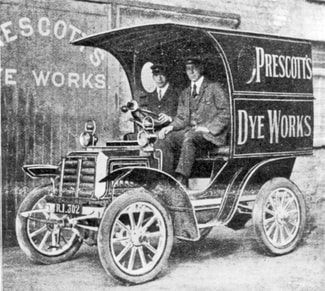 Prescott's Parcel Delivery Van, 1904. Photo Credit: RIAC Guinness Segrave Archive Prescott's Parcel Delivery Van, 1904. Photo Credit: RIAC Guinness Segrave Archive The first motorcar was imported into Ireland in March 1896. John Brown, a scientist who lived on the outskirts of Belfast, had spent the previous summer travelling through France where he became acquainted with a steam-powered Serpollet motorcar. Having travelled over 200 miles on it during his trip, he became enamoured by the novelty and opportunity which this form of transport offered. He convinced the owner to sell him the vehicle, which was delivered to his Dunmurray home during the following Spring. Legislation of the 1896 Locomotive on Highways Act in November of 1896 removed the strict rules imposed by MP’s who had been reluctant for the transport monopoly enjoyed by British railways to be challenged by the popularity of motorised vehicles on roads in the UK and Ireland. These rules, including the obligation for an individual to walk in front of the vehicle waving a red flag as a warning for other road users, had been hotly contested by many would-be motorists. They accused MP’s of being self - interested in preserving their stocks and shares in the rail industry. By the 1890s with growing numbers of motorcars appearing on the roads across Europe, politicians in Westminster had been forced to capitulate. Now the opportunity presented itself for many others to follow in Brown’s footsteps and officially become Irish motorists. Unfortunately for Brown and his fellow motorists, he quickly discovered that steam powered motorcars were badly suited to both Ireland’s climate and roads. Belfast’s damp weather made it difficult for him to power the car’s steam engine. When he did manage to power the vehicle enough to take it for a drive, he then had to encounter the problem of driving along Irish roads which were often unsurfaced, full of potholes and crowded by horses, animals and pedestrians unfamiliar with motorcars. Greater success was enjoyed by John Malcolm Gillies, editor of the Irish daily newspaper the Freeman’s Journal. Gillies had purchased and imported a German Benz motorcar only a matter of weeks after the importation of Brown’s Serpollet. Better suited to the Irish climate and the somewhat more suitable road conditions which the capital city offered, Gillies’ Benz soon became a familiar sight to many as he motored through the streets of Dublin. Reports of Irish people’s reactions when they encountered these early cars for the first time are fascinating and revealing. Some people mistook the heavy metal framework to be parts of trains which had broken off and somehow had ended up being found on the roads. Others who encountered the noisy and often smelly vehicles emerging out of the darkness of an evening along a quiet road being driven by faceless individuals – early motorists frequently wore goggles and head coverings to keep the smoke from the car’s engine and road dust from irritating their eyes and noses – thought them to be the work of the Devil and would bless themselves before running off so as to escape. Those involved in the Irish cycling industry, which had taken off during the 1880’s ‘Bicycle Boom’ – following the reinvention of the rubber pneumatic wheel by John Boyd Dunlop, a Scottish vet who practised in Belfast – were much more positive of the motorcar. Men such as Richard ‘J’ Mecready, (‘Arjay’ to his friends), editor of the Irish cycling magazine The Irish Cyclist, recognised the opportunities such vehicles could offer to the Irish public. This included the ability to cover greater distances in less team than had previously been possible on bicycles or horse-powered transport. Indeed, Arjay, who was first introduced to the motorcar by the great Australian-born businessman and celebrated cyclist Selwyn Edge, became so convinced of the merits of the motorcar that he set to work raising enough capital to launch a motoring magazine. He succeeded, and in January 1900, the dawn of a new era for Ireland began with the launch of Ireland’s first motoring periodical the Motor News, which aimed to offer readers advices on motoring in a “comprehensible and pragmatic manner” Arjay set out to convince a suspicious and uncertain public that cars were central to Irish modernity. Within three years, Ireland had secured its place in motoring history hosting its first International motor race. The 1903 Gordon Bennett Cup Race, named eponymously after the playboy American born newspaper magnate James Gordon Bennett Junior who sponsored it, was a pivotal moment not just for Ireland and Irish motoring but also for the future of motorsport. Only a few months earlier in May 1903, the Paris-Madrid motor rally, which had seen over 200 cars compete, had been forced to be abandoned after a number of fatalities involving both competitors and members of the public. Outraged by the bloodshed, the international press began a campaign to have public motorsport events cancelled citing them to be a danger for public health. Arjay and his fellow motoring enthusiasts, especially within the Irish Automobile Club – founded in 1901 to further and promote the “interests of automobilism in Ireland” – were keen to avoid this. Selwyn Edge’s victory for Britain in the 1902 Gordon Bennett Cup race had presented Ireland and the Irish motoring fraternity with a rare stroke of good fortune. The rules of the race stipulated that the proceeding race was to be held in the country which was victorious in the preceding year’s competition. The British public however, were reluctant for the race to be staged in Britain as they were fearful of fatalities and widely considered those who participated in such competitions to be wealthy playboys with little care or concern for those less fortunate. In contrast, the Irish response had been quite favourable (notable exceptions had included James Joyce and Arthur Griffith however) as many considered it would ignite the Irish motor trade industry and boost Irish tourism. With this in mind, those involved in organising the race continued with their plans amid the international outrage following the tragic events in France during May. Having devised a closed road circuit; consisting of two loops in a figure of eight which stretched through the counties of Kildare, Carlow and Laois, the Irish Automobile Club and Irish Tourism Association recruited 2,000 Royal Irish Constabulary officers from across Ireland and hundreds of volunteers who were extensively trained in crowd control. These officials moved into purpose built residential camps near the racing circuit ahead of the race, ensuring they were on hand to safely police and control the movements of the thousands of Irish and international spectators who flocked to the Irish midlands to watch the competition unfold. Their efforts and strenuous planning was rewarded with a thrilling race that was full of drama and speed, but which was completed successfully – and most importantly safely. Camille Jenatzy, the son of an immigrant Hungarian family who founded Belgium’s first rubber factory, emerged victorious. Nicknamed the ‘Red Devil’, on account of his ginger hair and beard, Jenatzy secured a loyal fan base in Ireland as a result of this performance and subsequently became a familiar fixture in the motorsport section of Irish newspapers until his untimely death in December 1913. Having proved that it was possible to stage a large international motor race with minimal risk for spectators, the Irish organisers also proved that Ireland was an ideal location for staging motoring events. Moreover in the fortnight that followed the conclusion of the Gordon Bennett Cup race, numerous motorsport events; ranging from Hill Climbs to Motor Boat races were held throughout Ireland. All of these were well attended and firmly indicated that there existed a substantial appetite amongst the Irish public for and appreciation of motorsports In the following years Ireland’s love affair with motorsport flourished. So much so that after the establishment of the Irish Free State and Northern Ireland, both governments sought to boost public morale by hosting national motorsport competitions. In Northern Ireland, the Ulster Tourist Trophy Races began in 1928 and were held annually until 1936; while in the Irish Free State the Irish International Grand Prix’s held in Phoenix Park occurred annually from 1929 until Fianna Fáil came to power in 1932. Although not financially profitable, the events fostered a strong community presence and garnered much needed positive press coverage after a decade of war and conflict. Even attracting motoring celebrities to compete, including British racing hero Malcolm Campbell and the celebrated Italian Baritone and Grand Prix winner Giuseppe Campari. In the preceding decade, cars played a pivotal role acting as both medic and mercenary. Motorcars were utilised by nationalists and unionists during their gunrunning exploits in the pre-war years. Over 600 cars participated in the Ulster Volunteer Force’s infamous Larne Gunrunning in 1913, to collect and transport approximately 35,000 rifles and 5 million rounds of ammunition throughout the province, while evading the authorities. A year later, a number of the same cars were driven to the battlefields of France. There they transported soldiers and supplies to and from the front line of World War I. For many young Irish soldiers, this war was the first time that they were able to familiarise themselves with motorcars. And a lucky few even seized the chance to learn how to drive and repair the vehicles, thereby gaining themselves a valuable trade that would be welcome when they returned home. The car was also responsible for influencing what kind of ‘home’ these young men returned to once the war ended. Cars and charabancs (touring-cars) had transported hundreds of British soldiers stationed at Dublin Castle and the Royal Barracks to the annual Fairyhouse horse races on the morning of Easter Monday in 1916. Therefore leaving the city’s defences substantially reduced ahead of the Easter Rising which began later that morning. During the course of the week’s Rising cars were employed by all participants in a variety of roles. Countess Constance Markievicz for instance, commandeered Dr Kathleen Lynn’s car and drove around the various Volunteer strongholds checking progress. The O’Rahilly used his famous green De Dion (later immortalised as a burnt out shell in a photograph taken on Prince Street) to transport food and supplies among the rebels. Many rebels, unappreciative of the cost and technology encapsulated in the vehicles, simply used them to construct barricades. Arguably a barricade built on Hatch Street out of cars taken from a nearby car showroom, may well have been the most expensive barricade erected over the course of the Rising when you consider that a car didn’t sell for anything less than £500 at this time. The high levels of civilian casualties also meant it became a matter of urgency for many privately owned cars to quickly be converted into makeshift ambulances transporting those wounded and fatally killed to and from hospitals and mortuaries. Hopes amongst Irish motorists that the end of World War I would lead to the resumption of normal motoring practices were quickly dashed by the outbreak of the War of Independence and the subsequent Civil War. The authorities, aware that cars could be used effectively by the rebels as part of their guerrilla tactics moved swiftly to impose tough regulations and eventually harsh restrictions on who owned, drove or had access to cars. In spite of this, commandeering of cars was frequently a key tactic employed by all sides. Tragically, travelling in cars during this period of unrest often meant motorists and their passengers were easy targets for snipers, as the assassination of Michael Collins, shot while travelling in the backseat of a car through his native Cork, proved. While many facets of Irish life were challenged by Partition and the establishment of the two new Irish states, the car and the role of motoring was not one of them. In fact, though Northern Ireland and the Irish Free State’s politicians shared little common political ideology, private correspondence indicates all were enthusiastic to avail of ministerial cars. Evidently, a new modern Ireland was set to emerge, one in which little was certain but the role of the car was assured. Within 25 years of its introduction to the isle, Irish life without the car seemed unimaginable and undesirable. |
Details
AuthorHolly Miley Archives
December 2023
|
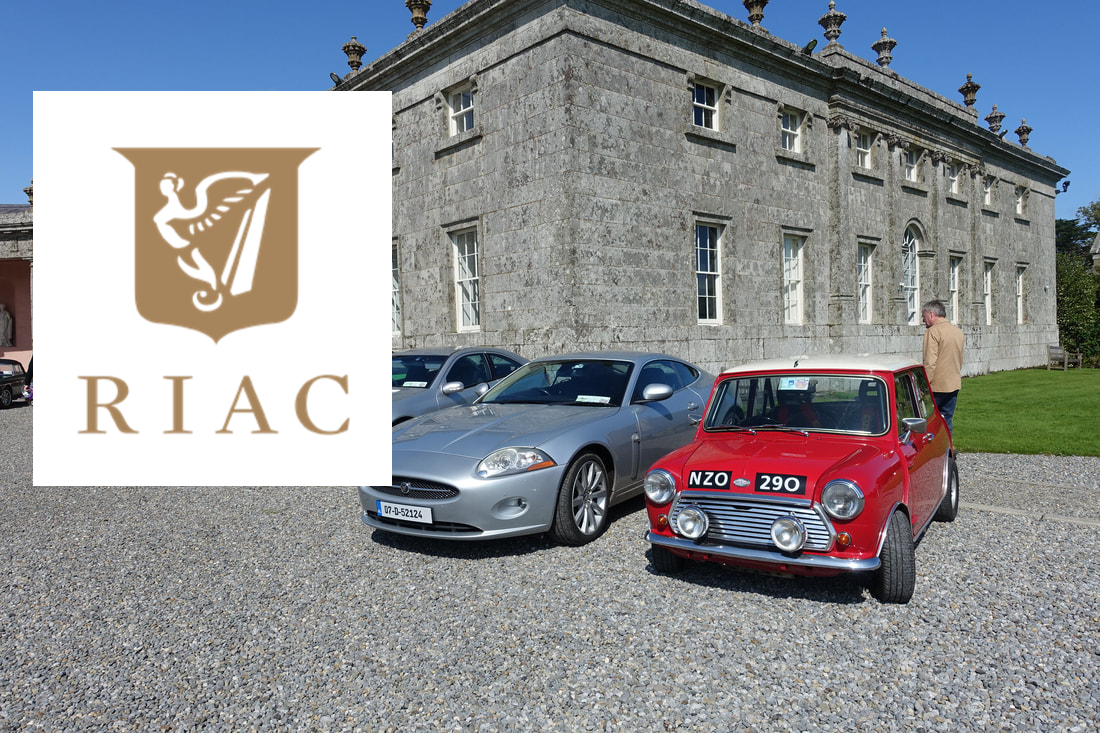
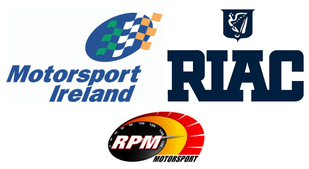
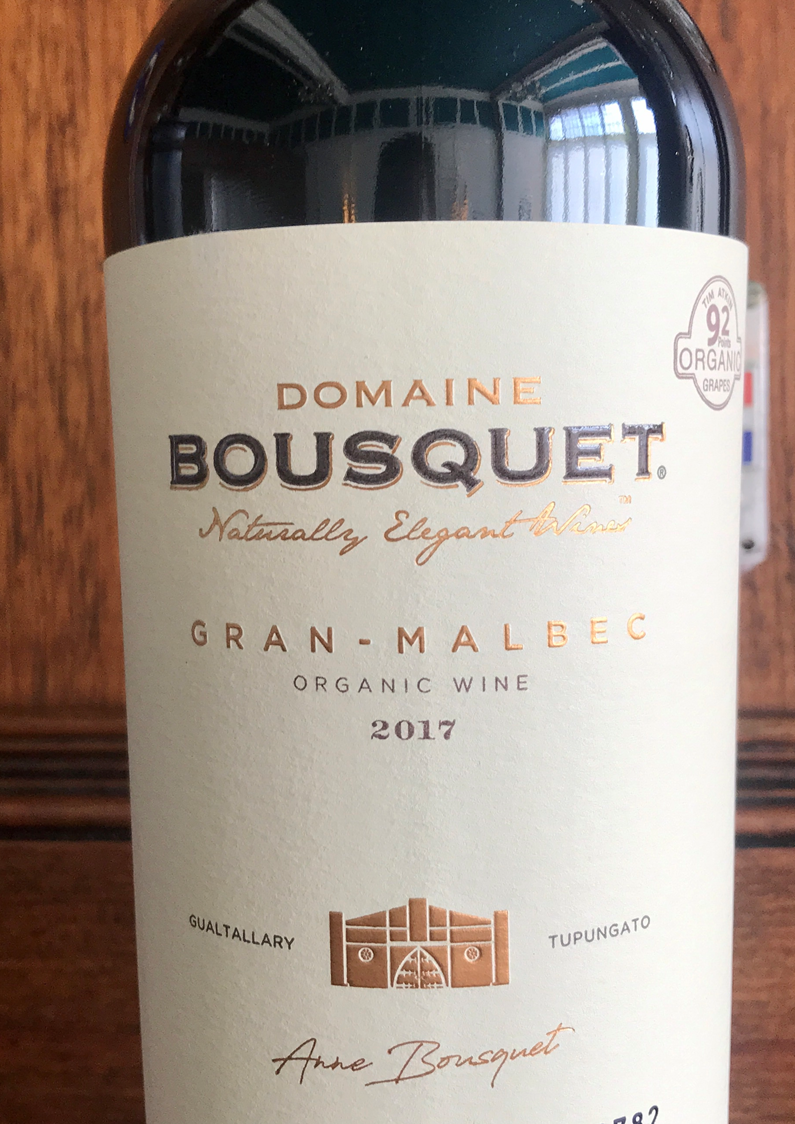
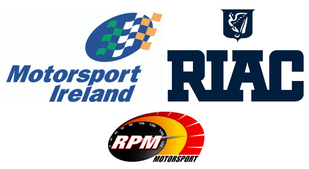
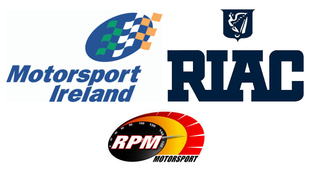
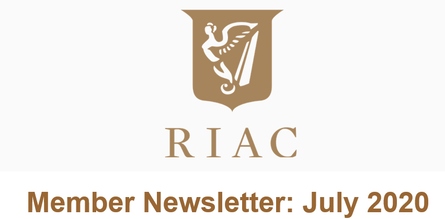
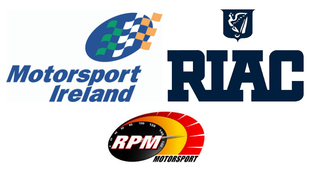
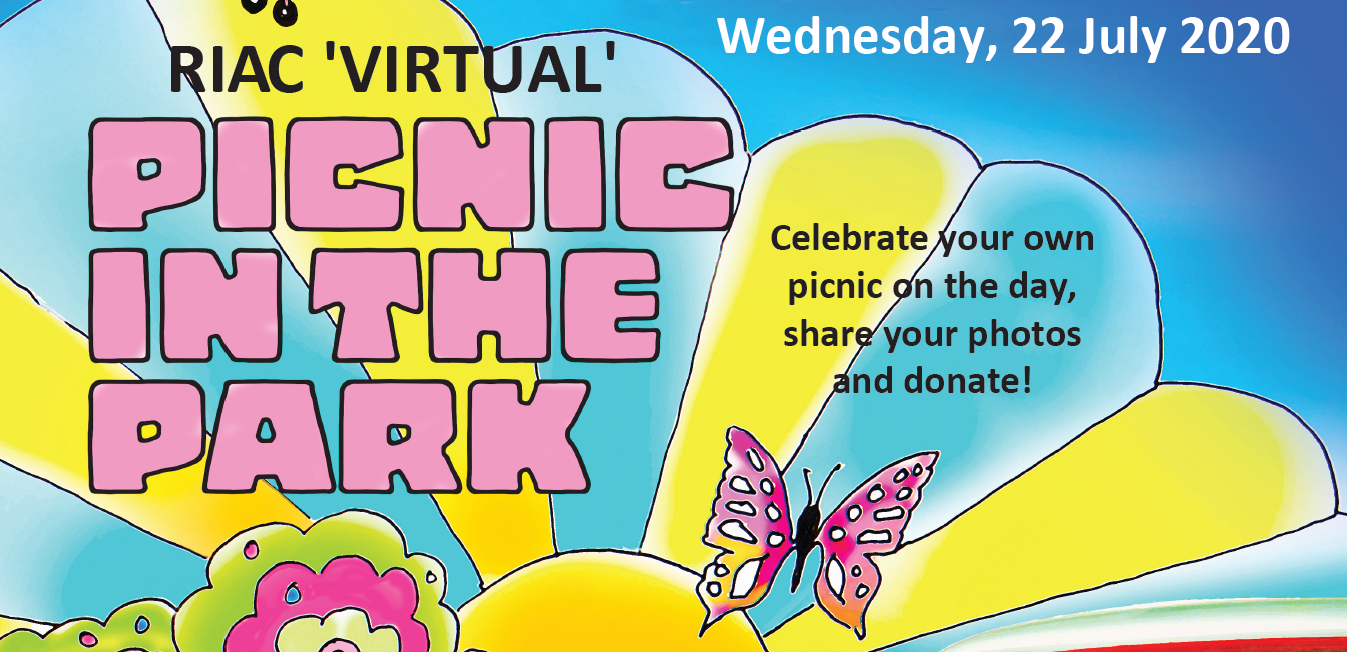


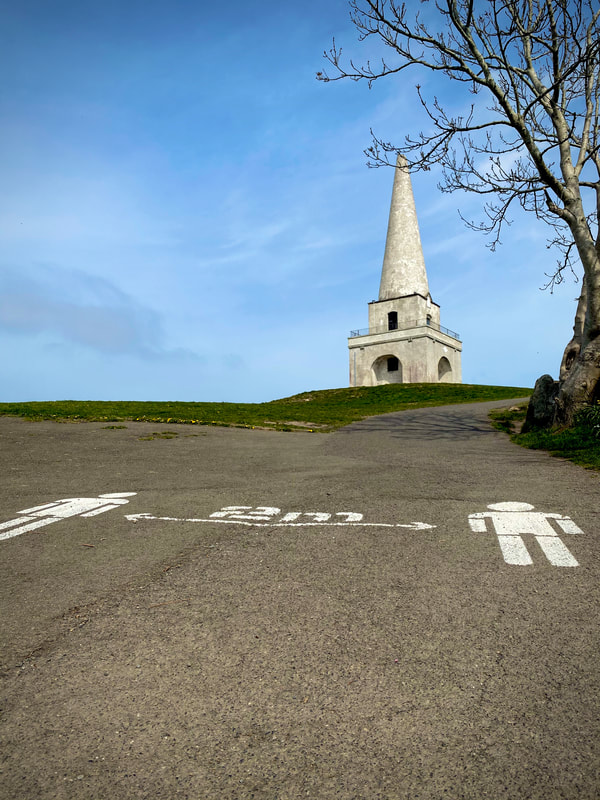
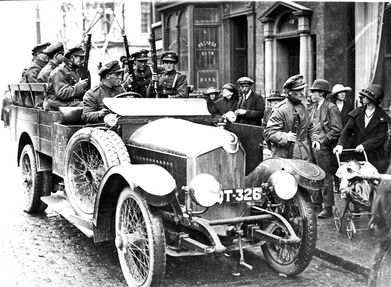



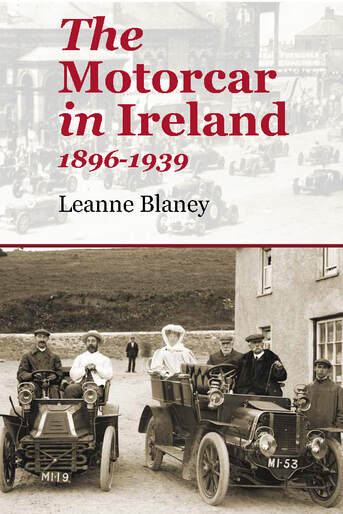
 RSS Feed
RSS Feed